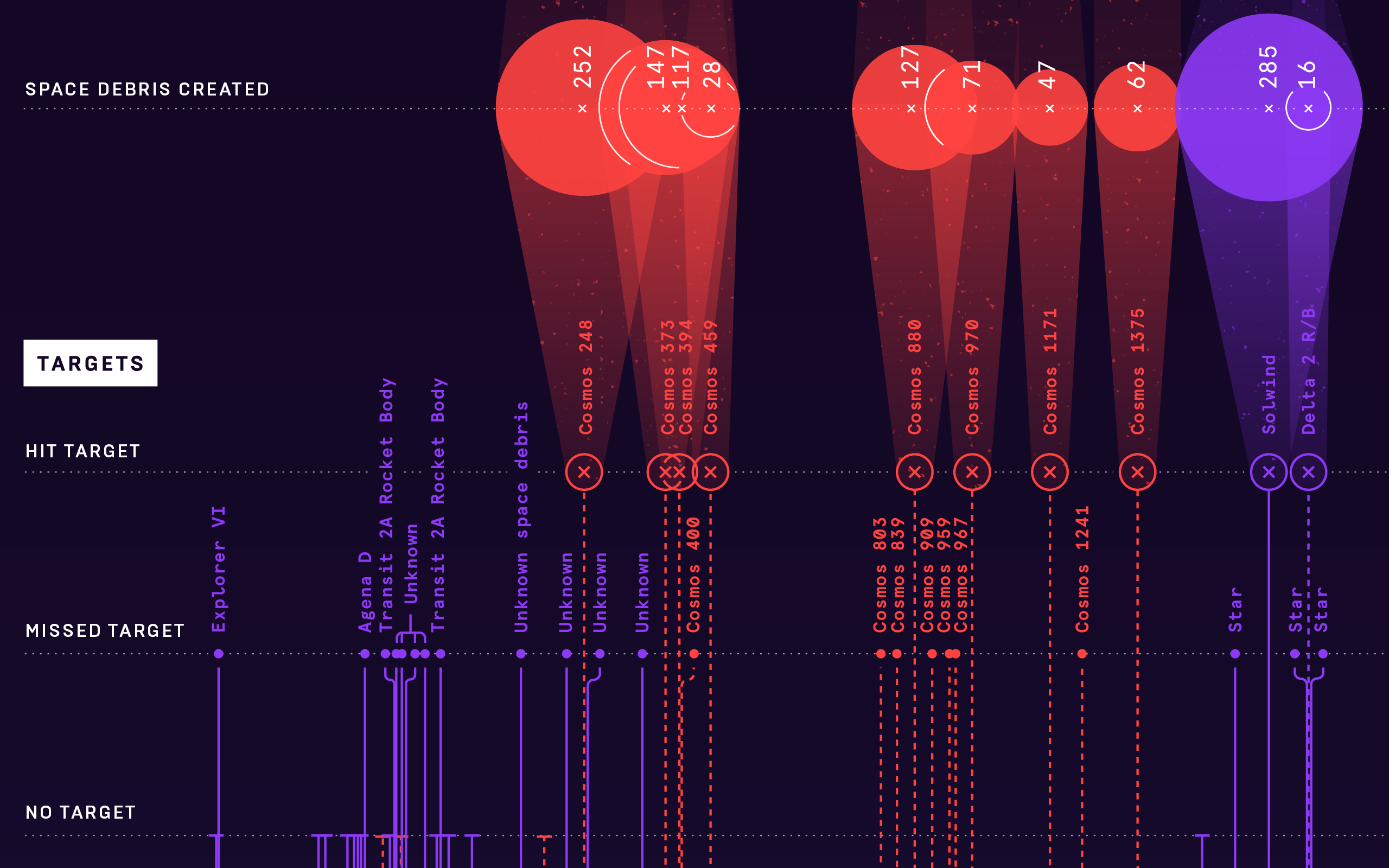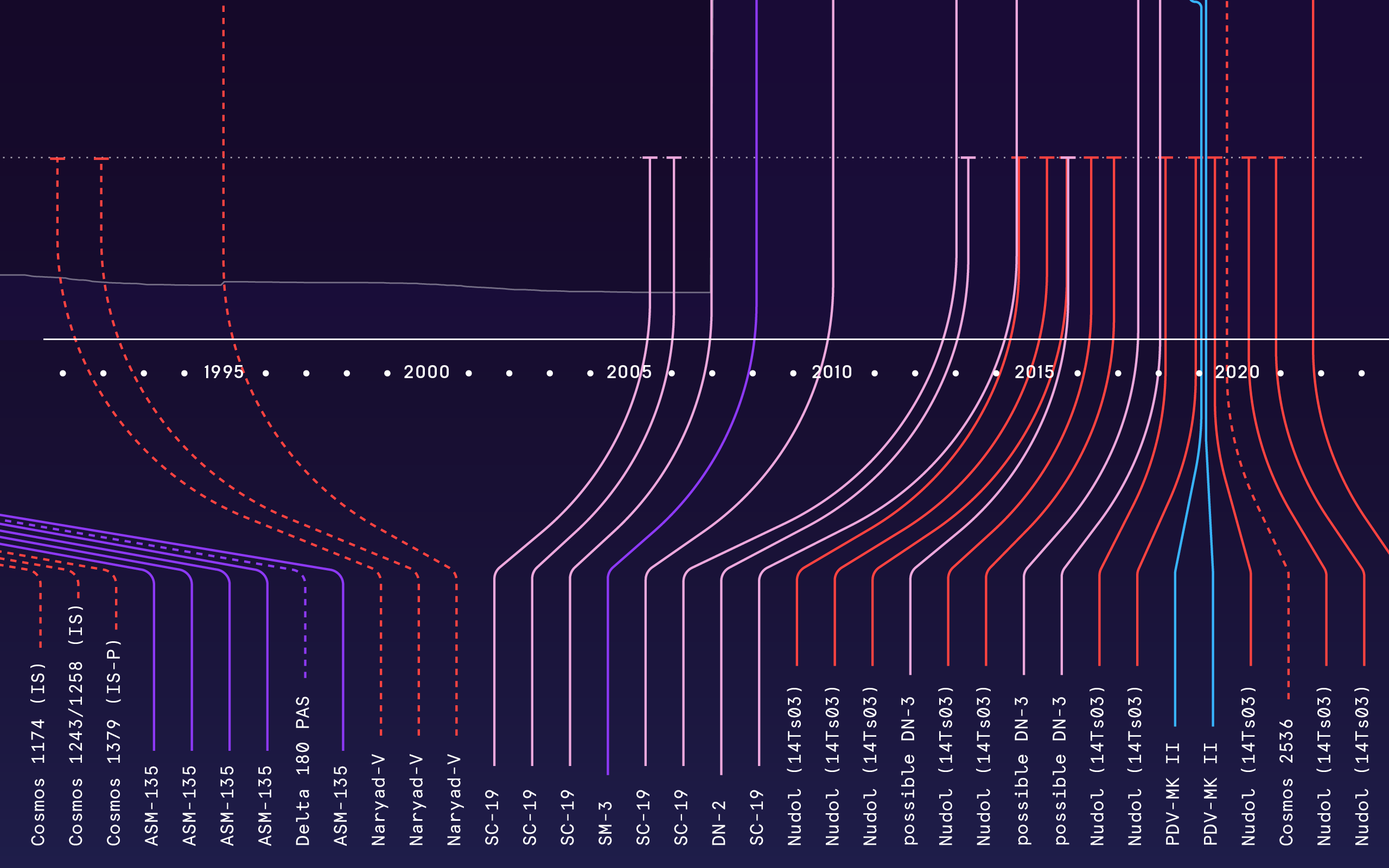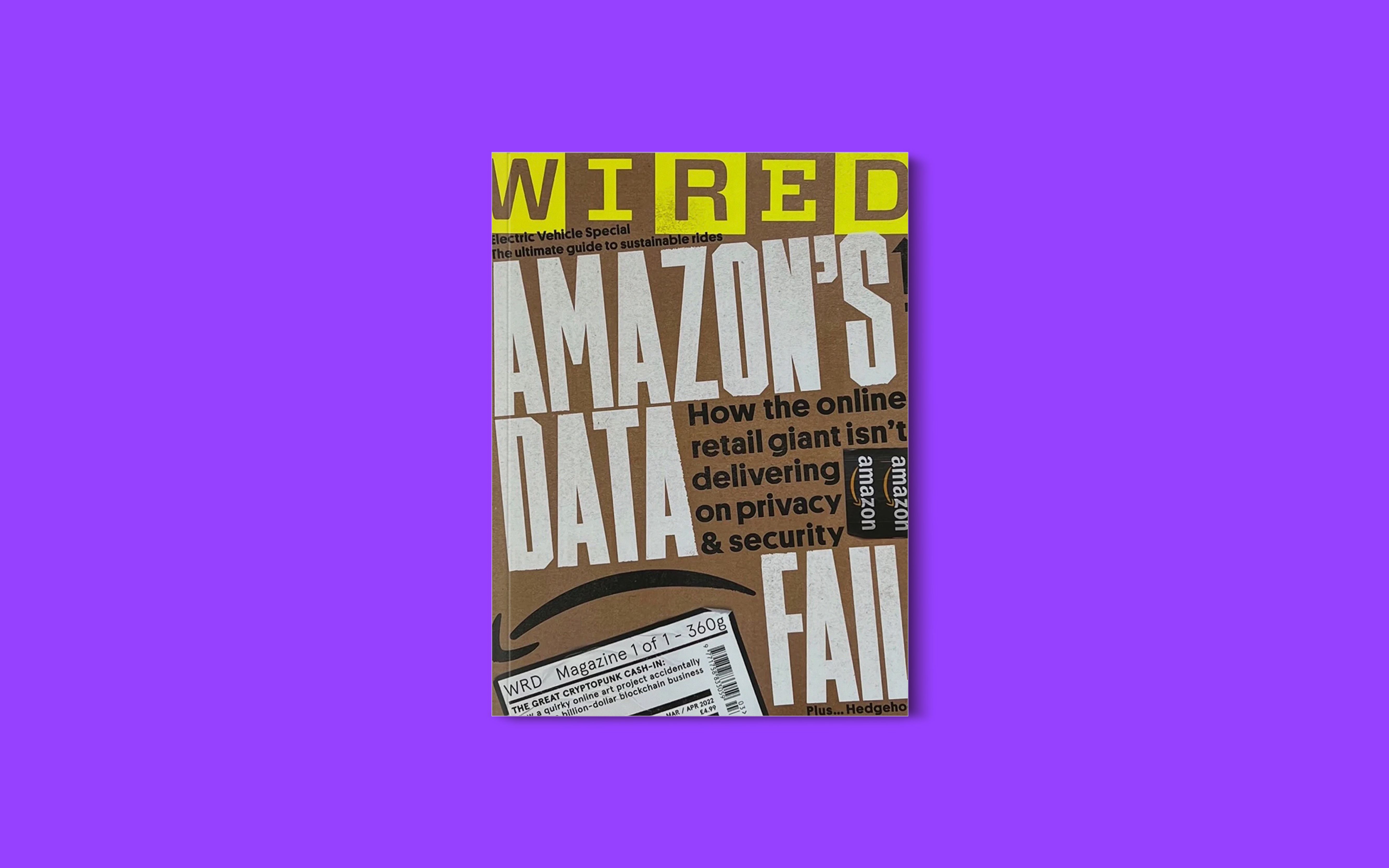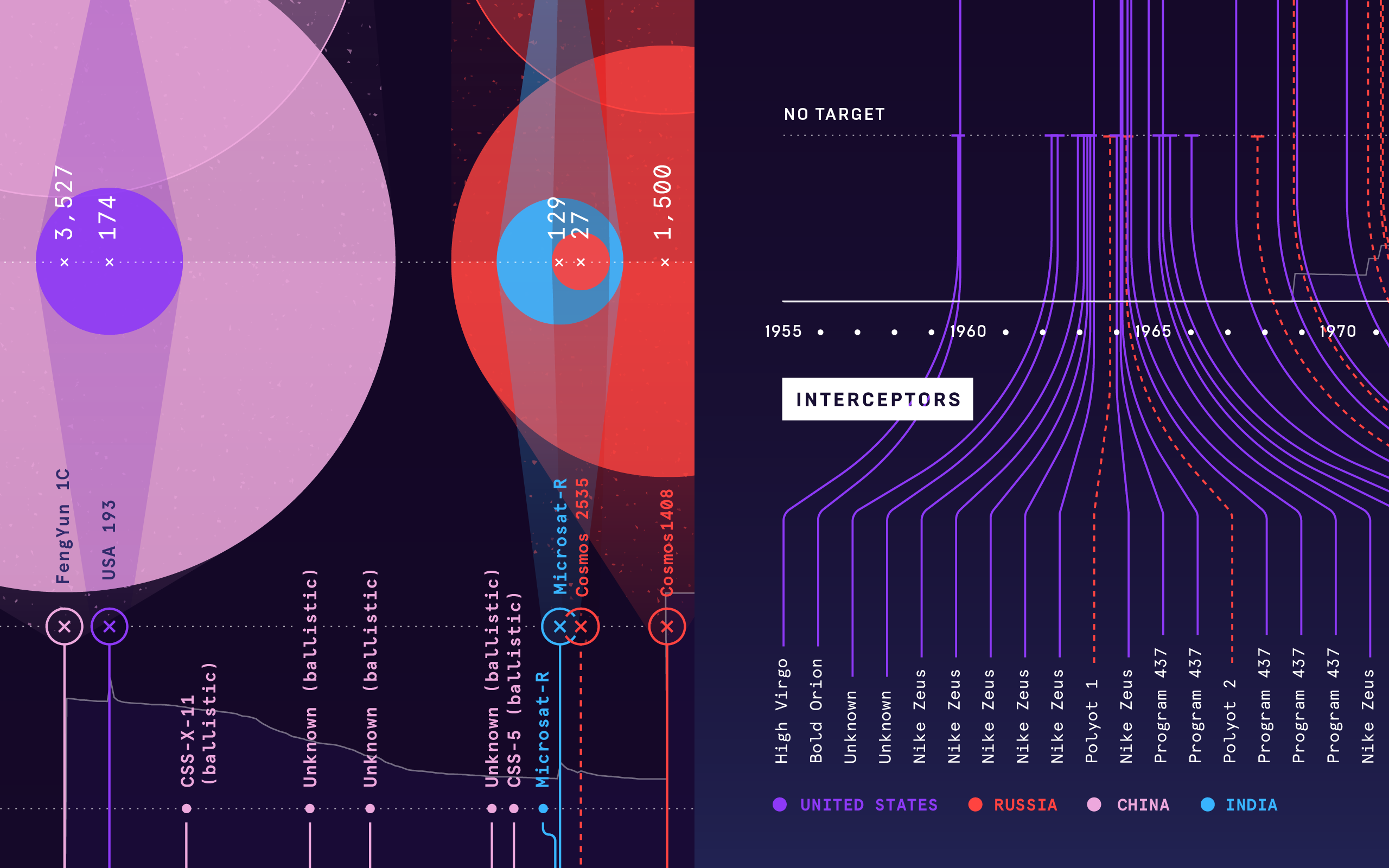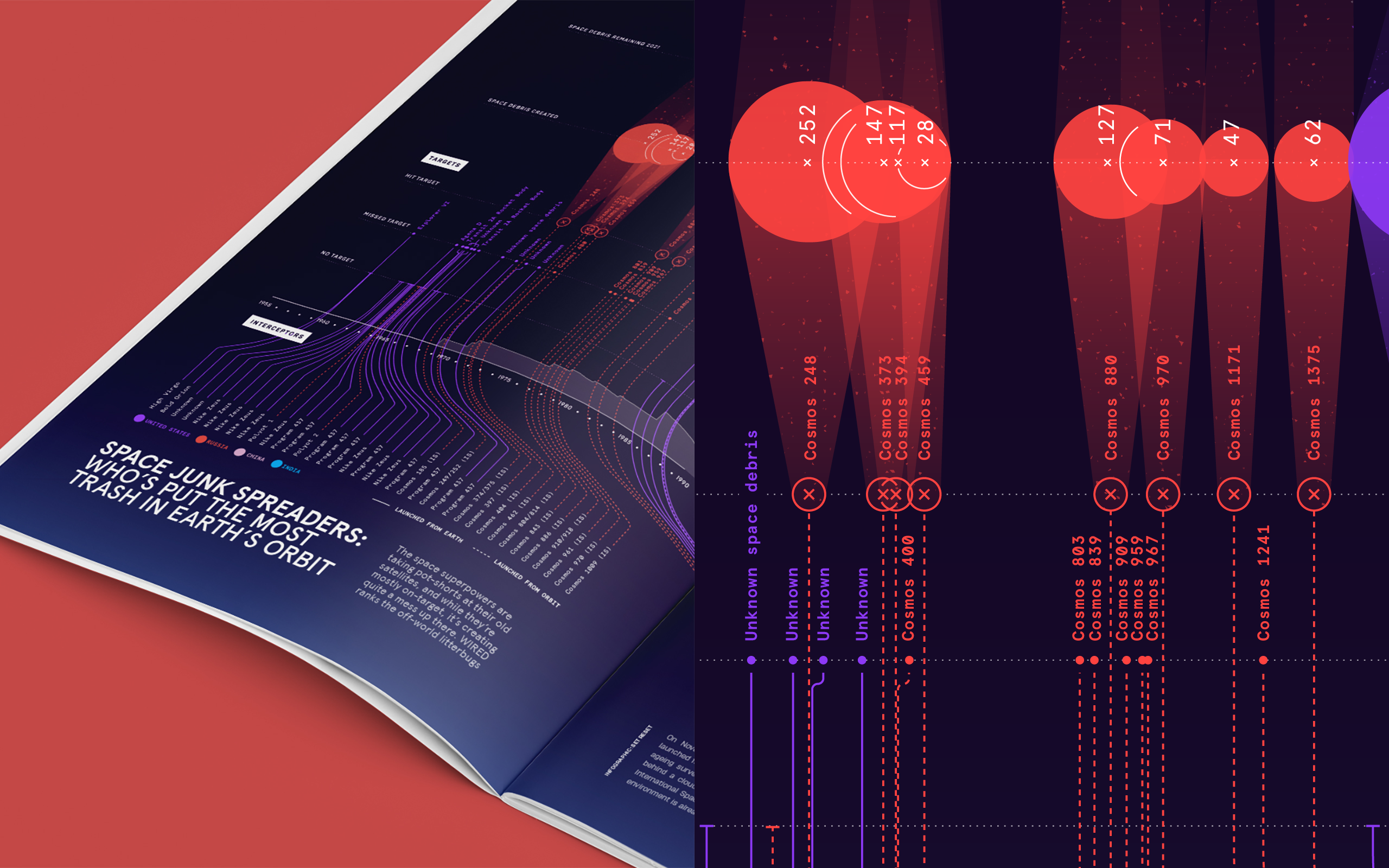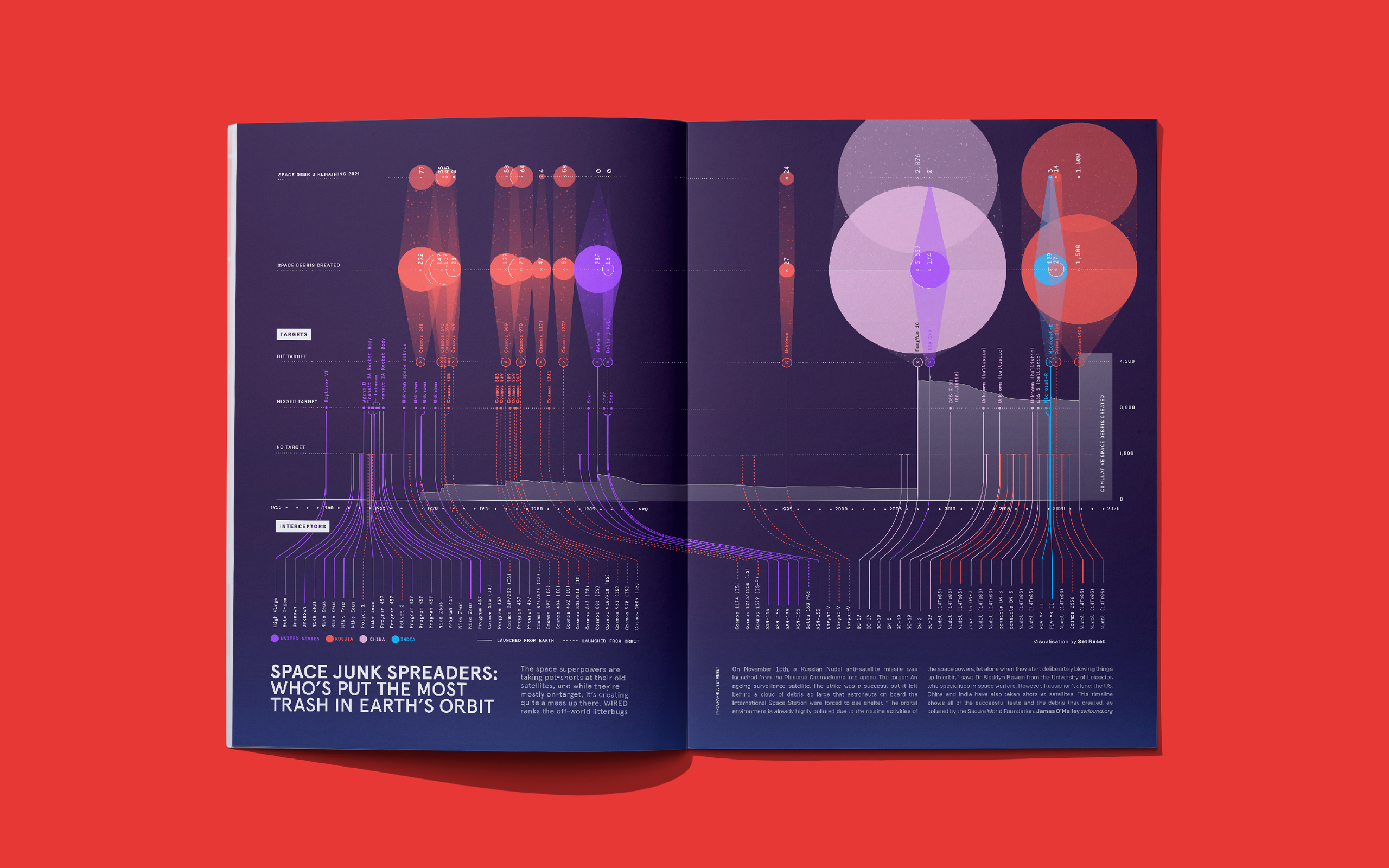Wired UK — Space Junk Spreaders
In the high-stakes game of global conflicts, the ability to peer from the heavens with omniscient eyes is an invaluable weapon. And in this celestial chess match, satellites reign supreme. Ever since the Sputnik shock of 1957, these orbiting platforms have redefined warfare, wielding the power of intelligence and reconnaissance like no tool before.
But with this power comes a chilling threat: the ability to cripple or silence these watchful eyes. Only a select few, the elite among nations, possess the technology to wield such force. This technology, a feat of engineering akin to hitting a bullet with another bullet, requires testing – a grim practice where space superpowers take potshots at their own retired satellites.
Yet, these tests come at a devastating cost. What goes up doesn't always come back down. The fallout of these anti-satellite (ASAT) tests are clouds of debris, some massive enough to force astronauts aboard the International Space Station into hiding.
Our visualisation delves into the disturbing history of ASAT tests, painting a timeline of every known instance. It unveils the true cost of each test, not just in the immediate debris field, but in the long-term orbital pollution they leave behind. Each launch is categorised by its origin, weapon type, and intended target.
This data viz answers the critical questions: who are the biggest space polluters? Which test unleashed the worst cascade of debris? And, most importantly, how much of this invisible death trap continues to lurk in the darkness of space?
